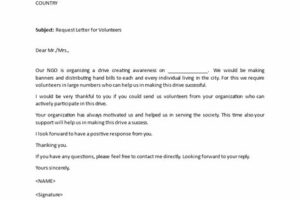Table of Contents
Learn how to effectively organize a volunteer program with our step-by-step guide. Discover the key elements of planning, recruiting, training, and managing volunteers to maximize their impact. Get practical tips and strategies to create a successful volunteer program that benefits both your organization and the community it serves. Start making a difference today!
Are you passionate about making a difference in your community? Do you want to organize a volunteer program that creates a lasting impact? Look no further, as this guide will provide you with the essential steps to successfully organize and manage a volunteer program. Whether you are a nonprofit organization, a school, or an individual looking to make a positive change, this comprehensive guide will equip you with the knowledge and skills needed to create a well-structured and impactful volunteer program. By following these steps, you can engage volunteers, mobilize resources, and ultimately achieve your goals for the betterment of your community.
Introduction
In today’s world, volunteering has become an essential part of many individuals’ lives. It offers a unique opportunity to make a positive impact on society while also gaining personal and professional growth. Organizing a volunteer program requires careful planning, effective communication, and a clear understanding of the goals and objectives. This article will guide you through the process of setting up and managing a successful volunteer program.
Identify Your Purpose
The first step in organizing a volunteer program is to clearly define its purpose and mission. Determine the specific cause or issue that your program aims to address. Whether it’s supporting education, animal welfare, or environmental conservation, having a clear purpose will help you attract like-minded volunteers and gain support from the community.
Create a Detailed Plan
Developing a detailed plan is crucial for the success of any volunteer program. Outline the activities, resources, and timeline required to achieve your program’s goals. Consider factors such as the number of volunteers needed, their roles and responsibilities, training requirements, and any necessary permits or certifications.
Recruit Volunteers
The heart of any volunteer program is its volunteers. Start by promoting your program through various channels such as social media, local community centers, and universities. Clearly communicate the purpose, benefits, and expectations of volunteering with your organization. Utilize online platforms and volunteer matching websites to connect with potential volunteers who are passionate about your cause.
Provide Training and Support
Once you have recruited volunteers, it is essential to provide them with proper training and ongoing support. Conduct orientation sessions to familiarize volunteers with your organization, its values, and the specific tasks they will undertake. Offer training programs to enhance their skills and knowledge related to their roles. Regularly communicate with volunteers to address any concerns or questions they may have.
Assign Roles and Responsibilities
To ensure smooth operations, clearly define and assign roles and responsibilities to each volunteer. Consider their skills, interests, and availability when allocating tasks. Establish a system for tracking progress and ensure that volunteers understand their deliverables and deadlines.
Implement Effective Communication Channels
Open and efficient communication is vital for the success of any volunteer program. Establish clear channels of communication through regular team meetings, email updates, and virtual platforms. Encourage volunteers to share their ideas, feedback, and concerns. Provide them with a point of contact who can address their queries promptly.
Recognize and Appreciate Volunteers
Recognition is a powerful motivator for volunteers. Show appreciation for their efforts by recognizing their accomplishments, milestones, and commitment to your cause. Organize volunteer appreciation events, acknowledge their contributions publicly, and provide opportunities for personal and professional growth within your organization.
Evaluate and Improve
Regularly assess the effectiveness and impact of your volunteer program. Collect feedback from volunteers, beneficiaries, and other stakeholders. Analyze the outcomes and identify areas for improvement. Use this information to refine your program, address any challenges, and enhance the overall experience for both volunteers and those benefiting from their efforts.
Engage the Community
Building strong relationships with the community is crucial for the sustainability of your volunteer program. Collaborate with local businesses, schools, and organizations to expand your reach and maximize your impact. Engage in community events, workshops, and initiatives to raise awareness about your cause and attract more volunteers.
Conclusion
Organizing a volunteer program requires careful planning, effective communication, and continuous evaluation. By identifying your purpose, recruiting passionate volunteers, providing training and support, and engaging with the community, you can create a successful program that makes a meaningful difference in the lives of both volunteers and those they serve.
Title: How to Organize a Volunteer Program
In order to successfully organize a volunteer program, it is crucial to establish clear goals and objectives that you wish to achieve. By identifying the specific areas where you need volunteers and determining the outcomes you hope to see through their efforts, you can lay the foundation for the entire program and attract the right volunteers.
1. Establishing Program Goals
The first step in organizing a volunteer program is to define the goals and objectives you wish to achieve. This will provide a clear direction for the program and help you determine the specific areas where you need volunteers. Whether it is to provide support for a community event, assist with fundraising efforts, or contribute to a specific cause, clearly defining your program goals is essential.
2. Developing a Clear Volunteer Role Description
To ensure a well-organized volunteer program, it is important to create detailed role descriptions for each volunteer position. Clearly outline the tasks, responsibilities, and time commitment expected from volunteers. This clarity will help potential volunteers understand their role from the start, aiding in recruitment and avoiding potential confusion or conflicts down the line.
3. Recruiting Volunteers Effectively
An effective recruitment strategy is crucial for attracting suitable volunteers to your program. Utilize multiple platforms such as social media, local newsletters, and community bulletin boards to spread the word about your program. Engage with local colleges, universities, or community organizations to tap into their networks for potential volunteers. Hosting informational sessions or attending community events can also help in recruiting interested individuals.
4. Ensuring Effective Volunteer Selection
When selecting volunteers for your program, it is important to carefully evaluate their skills, experience, and dedication. Develop an application process that includes resumes, interviews, and reference checks to ensure the best fit. Consider conducting a proper screening process, including background checks if necessary, to maintain the integrity and safety of your volunteer program.
5. Providing Comprehensive Training
To set volunteers up for success, it is essential to provide thorough training that equips them with the necessary skills and knowledge. Tailor the training sessions to meet the specific needs of the volunteer positions, covering aspects such as organization policies, job expectations, and any technical or safety training required. Ongoing training and support should also be offered to enhance volunteers’ skills and promote continued growth.
6. Establishing Effective Communication Channels
Open and accessible communication channels are vital to maintaining a well-organized volunteer program. Regularly communicate with your volunteers to provide updates, clarify expectations, and address any concerns. Utilize tools such as email, phone calls, group chats, or online platforms to facilitate seamless communication and foster a sense of belonging within the volunteer community.
7. Providing Meaningful Recognition and Appreciation
Acknowledging and appreciating volunteers’ efforts is crucial for maintaining their motivation and dedication. Develop a recognition program that highlights volunteer achievements, such as certificates, awards, or public appreciation events. Furthermore, personally recognizing individuals’ contributions through thank-you letters, verbal recognition, or small tokens of appreciation can go a long way in boosting volunteer morale.
8. Evaluating and Improving the Program
Regularly assess and evaluate the effectiveness of your volunteer program based on the established goals and outcomes. Gather feedback from volunteers regarding their experience to identify areas for improvement. Use this information to iterate on the program, making necessary adjustments to ensure continuous growth and success.
It is important to adapt and personalize these guidelines according to the specific needs and context of your organization or community when organizing a volunteer program. By following these steps and maintaining a professional voice and tone, you can successfully organize a volunteer program that benefits both your organization and the volunteers involved.
Organizing a volunteer program requires careful planning and execution to ensure its success and effectiveness. By following a structured approach and adopting a professional tone, you can create a program that not only benefits the community but also provides a fulfilling experience for the volunteers involved.
Here are some key points to consider when organizing a volunteer program:
- Identify the goals and objectives: Clearly define the purpose of your volunteer program. Determine what you hope to achieve, whether it is supporting a specific cause, providing assistance to a particular demographic, or addressing a community need. Having well-defined goals will help guide the program’s development and allow you to measure its impact.
- Research and assess community needs: Conduct a thorough analysis of the community’s needs and priorities. Engage with local organizations, government agencies, and community leaders to gain insights into the challenges and opportunities that exist. This research will enable you to tailor your volunteer program to address these specific needs effectively.
- Create a structured framework: Develop a detailed plan outlining the various aspects of your volunteer program. This includes defining roles and responsibilities, establishing clear communication channels, setting up a system for volunteer recruitment and training, and designing an evaluation process. A well-structured framework provides clarity and ensures smooth operations throughout the program.
- Recruit and train volunteers: Implement a comprehensive volunteer recruitment strategy to attract individuals who align with your program’s objectives. Advertise through various channels such as social media, local newspapers, and community bulletin boards. Once volunteers are selected, provide them with appropriate training to equip them with the necessary skills and knowledge to carry out their tasks effectively.
- Establish strong partnerships: Collaborate with local organizations, businesses, and community leaders to establish mutually beneficial partnerships. These alliances can provide additional resources, expertise, and support for your volunteer program. By working together, you can amplify the program’s impact and reach a wider audience.
- Implement effective communication channels: Establish open lines of communication with volunteers, ensuring they feel supported and valued throughout their involvement. Regularly update them on program developments, provide feedback on their contributions, and address any concerns or challenges that may arise. Clear and transparent communication fosters a positive volunteer experience and encourages long-term engagement.
- Evaluate and improve: Continuously evaluate the effectiveness of your volunteer program by collecting feedback from volunteers, community members, and other stakeholders. Use this information to identify areas for improvement and make necessary adjustments. Regular evaluations will help ensure that your program remains relevant, impactful, and aligned with the evolving needs of the community.
By following these steps and maintaining a professional tone throughout the process, you can organize a volunteer program that not only makes a difference in the community but also creates a meaningful experience for those involved. Remember, the success of a volunteer program lies in careful planning, effective execution, and ongoing evaluation.
Thank you for taking the time to visit our blog and read our article on how to organize a volunteer program. We hope that the information provided has been helpful and informative, and that you are now equipped with the knowledge and tools necessary to create a successful volunteer program of your own.In conclusion, organizing a volunteer program requires careful planning, effective communication, and a clear understanding of your organization’s goals and objectives. By following the steps outlined in this article, you can ensure that your program runs smoothly and efficiently, benefiting both your organization and the volunteers involved.First and foremost, it is crucial to establish a clear vision and mission for your volunteer program. This will guide your efforts and help you attract volunteers who are aligned with your organization’s values and objectives. Clearly define the roles and responsibilities of volunteers, as well as the tasks they will be expected to perform. This will ensure that everyone involved has a clear understanding of what is expected of them.Next, effective communication is key to the success of any volunteer program. Develop a comprehensive communication plan that includes regular updates, training sessions, and feedback mechanisms. This will help keep volunteers informed and engaged, while also providing them with the support and resources they need to excel in their roles. Utilize various communication channels such as email, social media, and regular meetings to maintain an open line of communication with your volunteers.Lastly, it is important to recognize and appreciate the contributions of your volunteers. Show your gratitude by expressing thanks, organizing appreciation events, or providing small tokens of appreciation. This will not only help retain volunteers but also motivate them to continue their involvement and potentially recruit others to join your cause.In conclusion, organizing a volunteer program requires careful planning, effective communication, and a genuine appreciation for the efforts of your volunteers. By following the steps outlined in this article, you can create a volunteer program that not only benefits your organization but also provides a fulfilling and rewarding experience for those involved. Remember, the impact of volunteers is invaluable, and by organizing a successful program, you can make a positive difference in your community.
Video How To Organize A Volunteer Program
People Also Ask: How To Organize A Volunteer Program
1. How do I start organizing a volunteer program?
Starting to organize a volunteer program involves several key steps:
- Determine the objective: Clearly define the purpose and goals of your volunteer program.
- Create a plan: Develop a comprehensive plan outlining the activities, roles, and responsibilities of volunteers.
- Recruit volunteers: Reach out to potential volunteers through various channels such as social media, community organizations, and word-of-mouth.
- Train and orient volunteers: Provide necessary training and orientation sessions to ensure volunteers have the required knowledge and skills.
- Assign tasks: Match volunteers with appropriate tasks based on their interests, skills, and availability.
- Establish communication channels: Set up effective communication channels to keep volunteers informed and engaged.
- Recognize and appreciate volunteers: Implement a recognition system to acknowledge and appreciate the efforts of your volunteers.
2. How can I effectively manage volunteers?
To effectively manage volunteers, consider the following:
- Clear communication: Maintain open and transparent communication channels to provide guidance, updates, and feedback.
- Provide support: Ensure volunteers have access to necessary resources, training, and supervision.
- Delegate responsibilities: Assign tasks based on individual strengths and interests, allowing volunteers to contribute effectively.
- Offer flexibility: Accommodate volunteers’ schedules and availability to promote their commitment and satisfaction.
- Encourage teamwork: Foster a sense of collaboration among volunteers by organizing team-building activities and encouraging knowledge sharing.
- Regular evaluation: Assess the performance and impact of volunteers periodically, providing constructive feedback for improvement.
3. How can I attract volunteers to my program?
To attract volunteers, consider implementing the following strategies:
- Create a compelling mission: Clearly communicate the purpose and impact of your volunteer program to inspire potential volunteers.
- Utilize social media: Leverage platforms like Facebook, Twitter, and Instagram to reach a broader audience and share engaging content.
- Collaborate with local organizations: Partner with community organizations, schools, or businesses to expand your volunteer network.
- Offer meaningful experiences: Provide volunteers with valuable opportunities to contribute, learn, and make a difference.
- Share success stories: Highlight the achievements and positive outcomes resulting from volunteer efforts to showcase the program’s impact.
- Provide incentives: Consider offering incentives such as certificates, recognition events, or volunteer appreciation gifts.
Remember, organizing a volunteer program requires careful planning, effective management, and continuous engagement to ensure a successful and impactful experience for both volunteers and the organization they serve.






